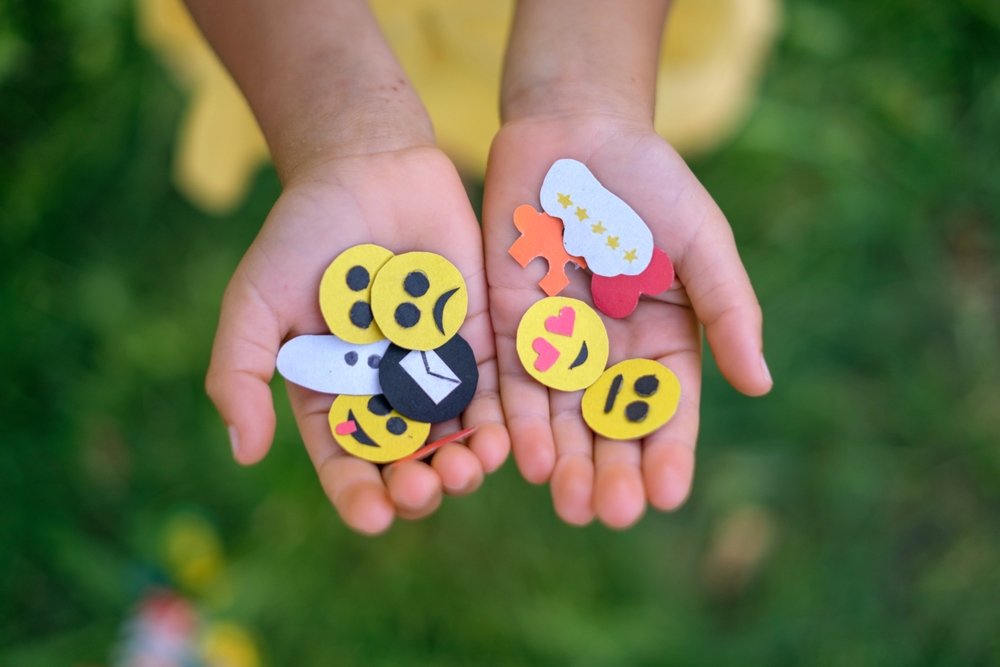

Many parents notice bigger reactions from a child around this age. Growth in the brain and shifting social demands often make feelings feel stronger and harder to handle.
At this stage, children may cry, yell, refuse tasks or act aggressively. These outbursts can happen because regulation skills are still forming. The first step is spotting what is typical versus what needs added support.
Validating feelings while setting clear limits helps a child learn to manage emotions. Simple tools like deep breathing, grounding, short journaling sessions and gentle affirmations calm surges. Routines for sleep and nutrition also affect behavior and health.
Some children show larger reactions due to conditions such as ADHD, anxiety, OCD or oppositional challenges; monitoring patterns matters. With time, patience and consistent guidance, a child builds skills to handle big feelings more effectively.
Understanding why is my 8 year old so emotional
At this stage, many children show larger, sudden feelings that catch caregivers off guard. Tantrums may include crying, screaming, kicking, throwing items, hitting, biting, going rigid, breath-holding spells or head banging. These emotional outbursts remain common while self-control and executive skills mature.
What big feelings look like
- Tears, loud yelling, stomping or collapsing into a limp state.
- More intense acts such as throwing objects or brief aggression.
- Sudden withdrawal, breath-holding, or hitting when upset.
Normal development versus red flags
Many children calm with steady routines, clear limits, and validating language. Caregivers can say, “I understand you feel upset,” to validate child emotions while keeping safety rules firm. This helps a child learn control and feel seen.
Seek help if outbursts are frequent, escalate across settings, or harm school progress and friendships. Persistent aggression, self-harm risk, or daily impairment warrants professional review.
| Sign | Typical | When to consult |
|---|---|---|
| Tears and yelling | Occasional, resolves with comfort | Daily or prolonged episodes |
| Throwing or hitting | Rare, short-lived with limits | Frequent or dangerous behavior |
| School or social impact | Minor, teacher supports help | Declining grades or lost friendships |

The science and stages behind heightened feelings
Physical and neural changes often combine to make feelings feel larger during late childhood. Around this time, hormonal shifts and brain growth can change how a child reacts to everyday stress.
Adrenarche and hormone changes
Adrenarche is a pre-puberty hormone shift that can raise reactivity. Some children show more tears, frustration, or anger during this phase. Boys may sometimes present with more visible aggression.
Brain development and self-control
The frontal lobes that manage impulse control and flexible thinking remain under construction. This growth pattern makes steady regulation hard when strong feelings appear.
Highly sensitive children
About 15–20% of the population has high sensitivity. These children often show deep empathy, vivid imagination, and strong creativity yet face overstimulation from noise, light, or harsh criticism. Busy classrooms or group play can increase outbursts and stress in school settings.
Mental health and trauma factors
- Common concerns include ADHD, anxiety, ODD, and OCD; each can raise the frequency or intensity of outbursts.
- Trauma exposure may show as sleep disruption, hypervigilance, or acting out at home and school.
| Driver | Typical sign | Consideration |
|---|---|---|
| Adrenarche | More tears or anger | Normal but monitor changes |
| Sensitivity | Quick overstimulation | Adjust sensory load |
| Disorders | Frequent behavior issues | Seek evaluation and supports |
Note: Observing patterns and duration helps tell typical shifts from persistent issues. Identifying the main driver guides targeted supports without labeling the child.
Spotting triggers and patterns that drive emotional outbursts
Noticing small patterns helps caregivers spot moments that raise stress and lead to outbursts. A focused look at daily routines often reveals repeated triggers and unmet needs. This helps plan simple changes that prevent escalation.
Common triggers: transitions, disappointment, lack of control
Transitions—moving from play to getting ready or from recess to class—often sparks frustration. Denied requests or feelings of low control can heighten anger and produce quick outbursts.
Unmet physical needs: sleep, hunger, restroom breaks
Check basic needs first. Hunger, fatigue, or a full bladder lower a child’s tolerance and make strong reactions more likely.
Sensory overload and environmental stressors
Noisy cafeterias, bright stores, or crowded hallways can overwhelm sensitive children. These sensory hits often precede meltdowns and sudden withdrawal.
Problems with friends in school
Conflicts, teasing, or feeling excluded can weigh heavily on a child’s emotions. Friendship struggles may cause irritability, distract from learning, and increase the chance of sudden emotional reactions.
Parent stress and family changes a child may be sensing
Kids pick up on household tension. A parent’s visible worry or family changes can increase a child’s feelings even when adults do not discuss them directly.
- Track patterns: note time, place, preceding events, people present, and any sensory factors.
- Offer previews and limited choices to boost control and reduce power struggles.
- Share notes with school staff to spot classroom or playground patterns.
| Trigger | Sign | Quick action |
|---|---|---|
| Transition | Protest or refusal | Give a 2-minute warning |
| Unmet need | Irritability, yawning | Offer snack or bathroom |
| Sensory overload | Covering ears, meltdown | Move to quiet spot |
Note: Tracking is not about blame. It reveals predictable stressors and helps adults protect a child’s calm time and build skills.
How to help a child regulate emotions in the moment
Simple steps taken in the moment help a child regain control and safety. Caregivers who act calmly provide a clear path from upset to repair.
Validate feelings, set behavior limits
Validate child emotions by naming the feeling and saying it is okay feel upset. Pair validation with a clear limit: behavior that hurts others cannot continue.
Quick calming techniques
Guide a child through one deep breathing count or three slow breaths. Try grounding: notice five things they can see or touch. Progressive muscle relaxation helps release tightness.
Build emotional literacy and coping thoughts
Help kids name feelings and use short coping phrases, such as “I can handle this one step at a time.” Practice affirmations and brief journaling when calm to strengthen skills to manage emotions later.
Model calm and co-regulate
Adults slow their breathing, lower tone, and use simple words. This co-regulation trains a child to mirror a calmer response during outbursts.
Aftercare: repair and reinforce
Wait until the child is calmer to reflect. Offer warmth, repair any harm, and praise small steps like one breath or asking for space.
Extra tip for parents
Consider using a parental control app such as Parentaler.com to monitor online activity, set healthy screen time limits, and reduce digital triggers that can contribute to emotional stress.
| Moment | Action | Why it helps | Tip |
|---|---|---|---|
| At peak | Validate, set limit | Separates feelings from behavior | Use “I see you are upset” |
| During calm down | Breathing, grounding | Reduces arousal fast | Count to four on inhale |
| After | Reflect and reinforce | Builds future coping | Celebrate small wins |
Building daily routines that support mental health
Consistent habits at home and school give children tools to manage emotions. Routines reduce uncertainty, lower stress, and make coping skills easier to use when a child needs them most.
Sleep hygiene for school-age kids
Aim for 9–11 hours nightly with fixed bed and wake times. A short wind-down, guided meditation, or a lavender scent can cue rest and improve sleep health for school routines.
Predictable transitions and timers for getting ready
Use visual timers, checklists, and two-minute warnings to smooth mornings and evenings. Clear cues cut last-minute fights and help a child complete tasks with less pressure.
Comfort zones, strengths, and gentle exposure
Design days around strengths and safe spaces, such as a calm corner stocked with sensory tools and a coping menu. Gradual, gentle exposure builds confidence without overwhelming sensitive children.
When to seek professional support and how to talk to school
Seek care if struggles last months, worsen across settings, or signal anxiety or possible disorders like ADHD, ODD, or OCD. Pediatricians, child therapists, and community programs offer screening and interventions.
Share patterns and successful techniques with teachers. A brief meeting can arrange supports such as transition warnings, preferential seating, or coordinated breathing breaks before homework.
- Practice a daily “breathing break” after school to reset and use deep breathing techniques taught earlier.
- Include the child when planning routines to encourage buy-in and life skills that transfer outside the home.
| Focus | Daily action | Benefit |
|---|---|---|
| Sleep | Fixed schedule + wind-down | Better mood and attention at school |
| Transitions | Visual timer, checklist | Fewer conflicts while getting ready |
| Support | Calm corner, coping menu | Independent emotion regulation |

Conclusion
A steady plan of validation, limits, and practice helps families move forward. The first step is understanding how development, environment, and temperament combine to produce outbursts in a child.
Daily routines—regular sleep, clear transitions, and short regulation breaks—build lasting skills. A calm adult response paired with steady practice goes a long way and shortens intense episodes over time.
Parents should coordinate with school staff and seek pediatric care when signs of anxiety or other disorders affect daily life. Encourage child involvement in solutions to boost ownership and transfer learning beyond home.
Progress adds up: each breath, pause, and small success strengthens the family toolbox. With patience and consistent follow-through, children gain independence and resilience in a meaningful way.




